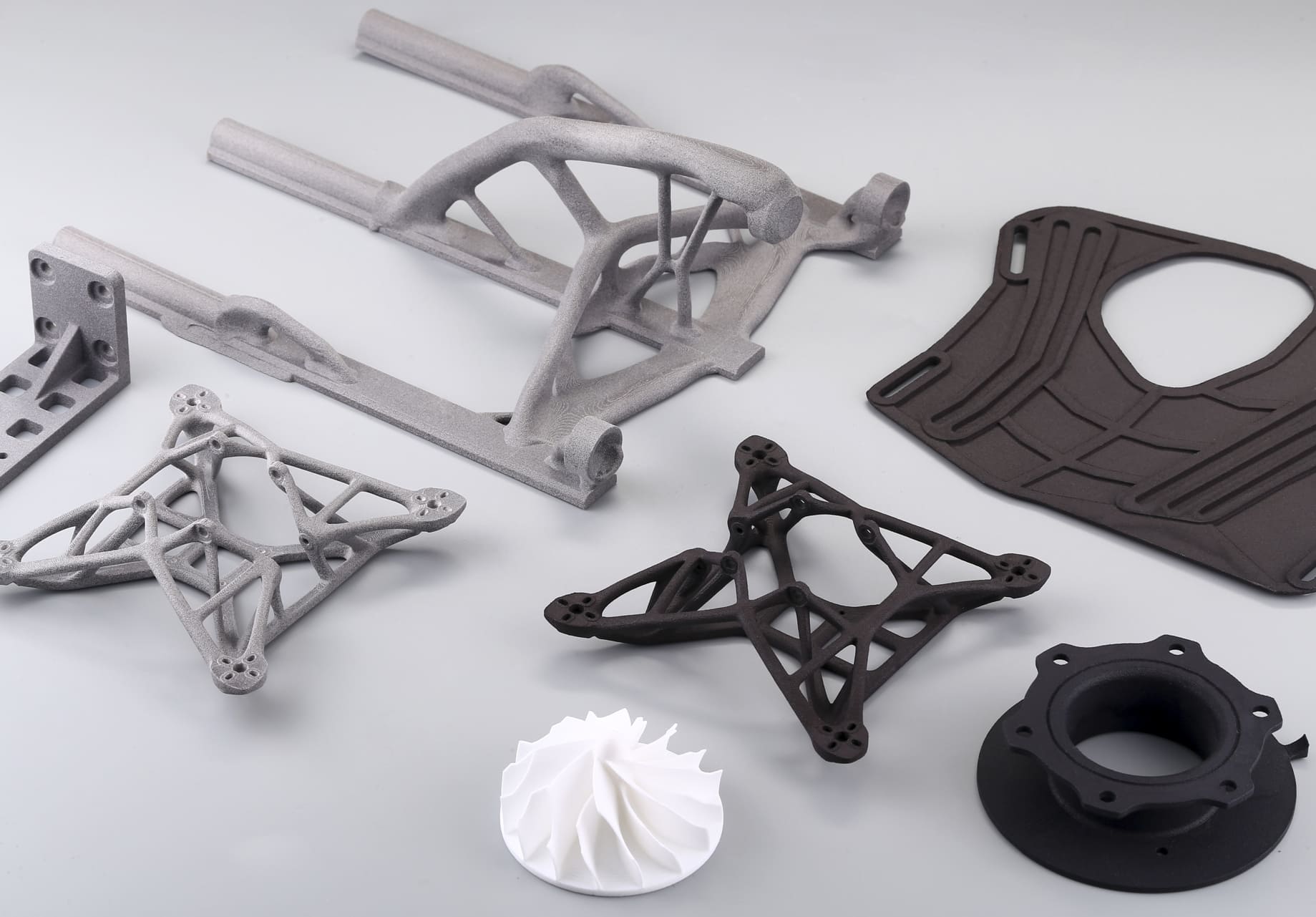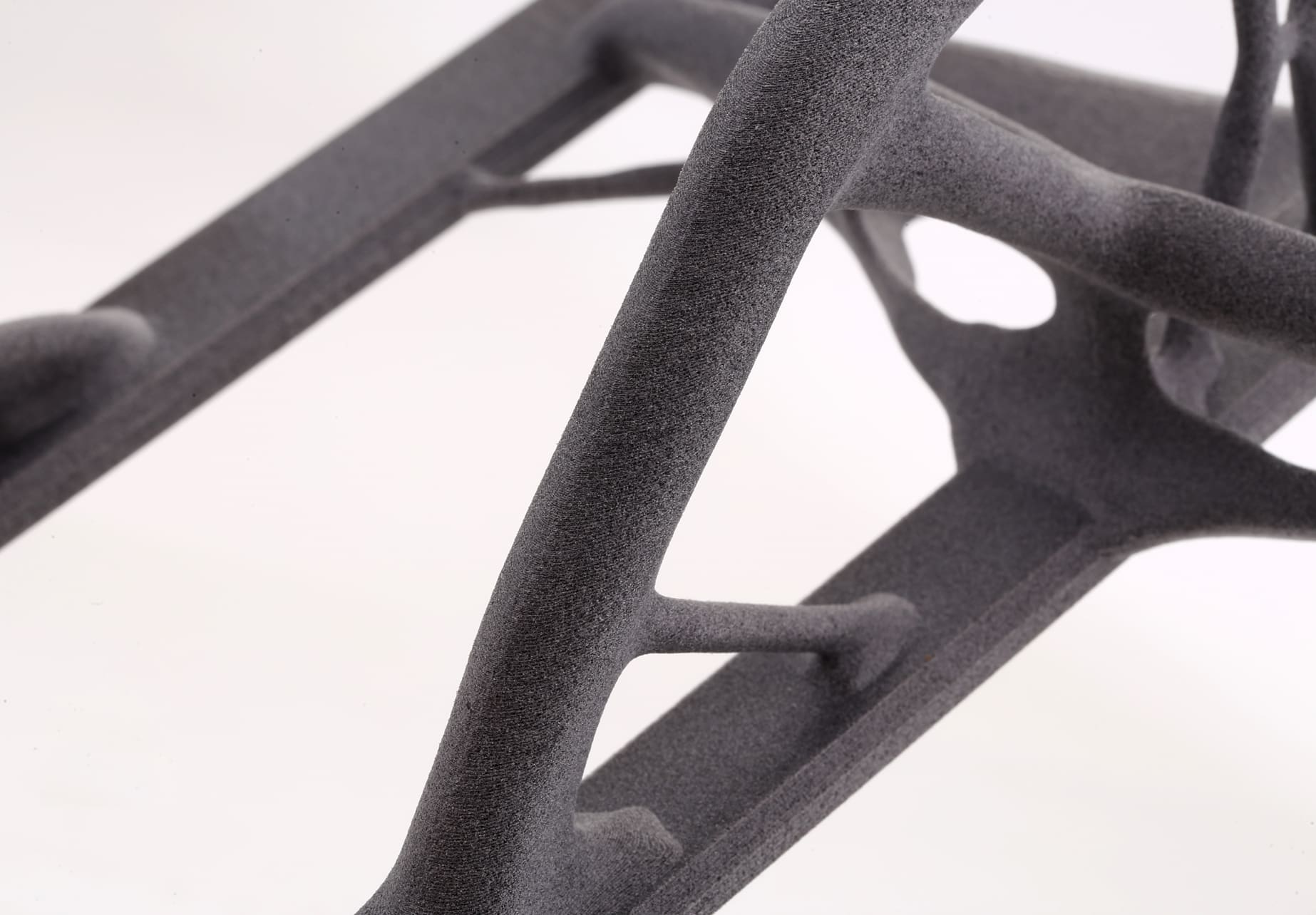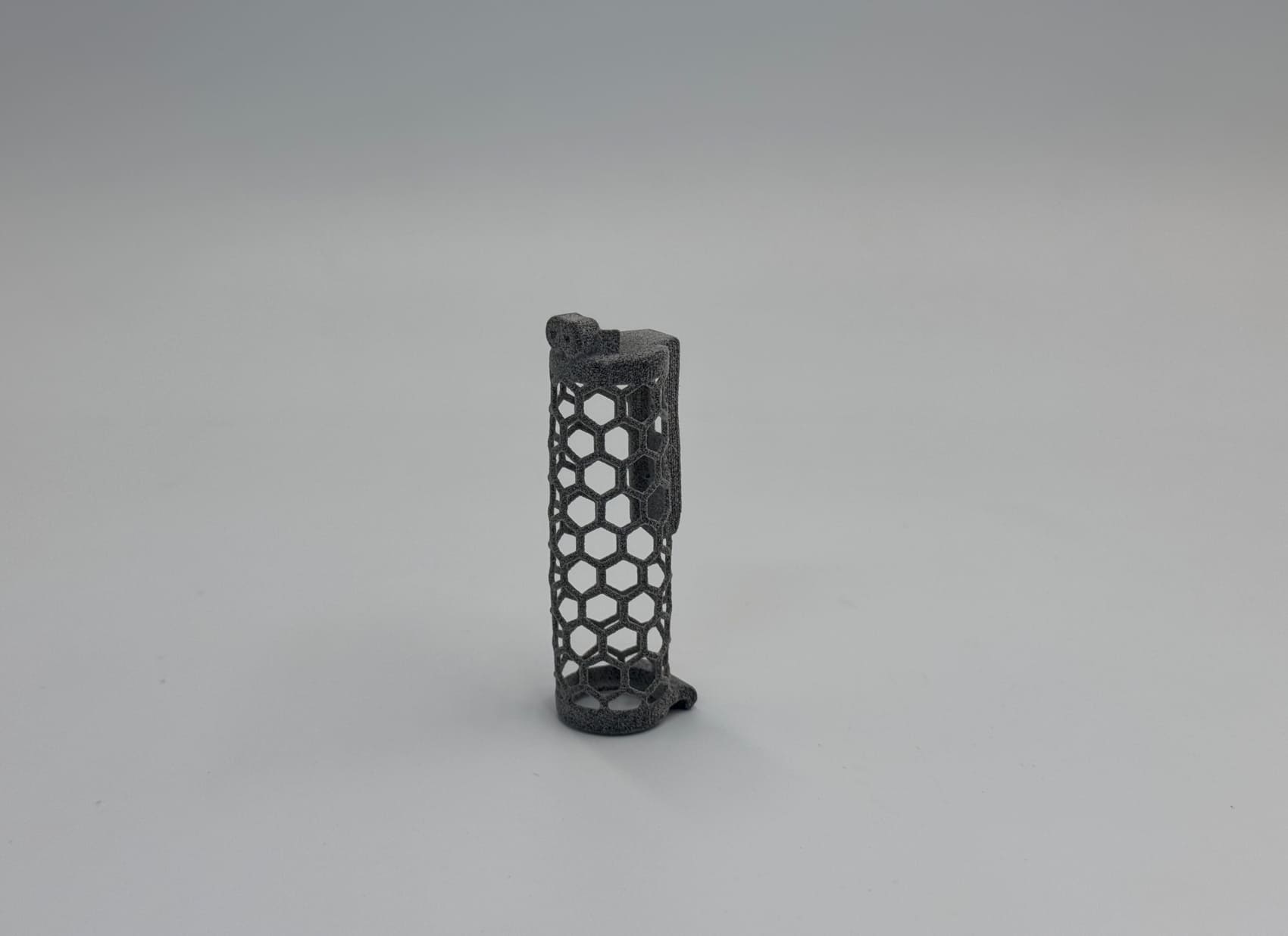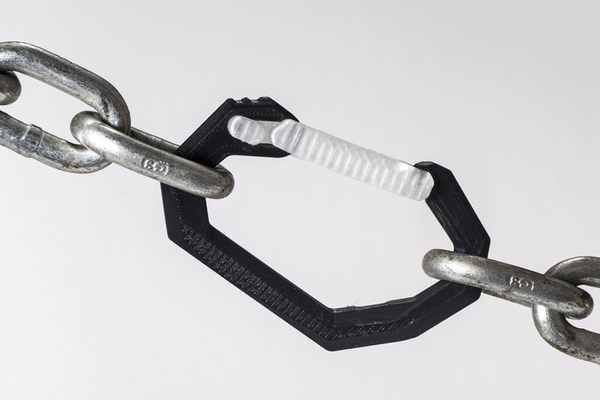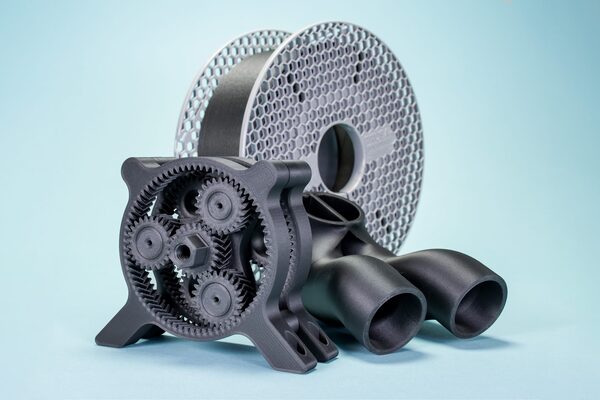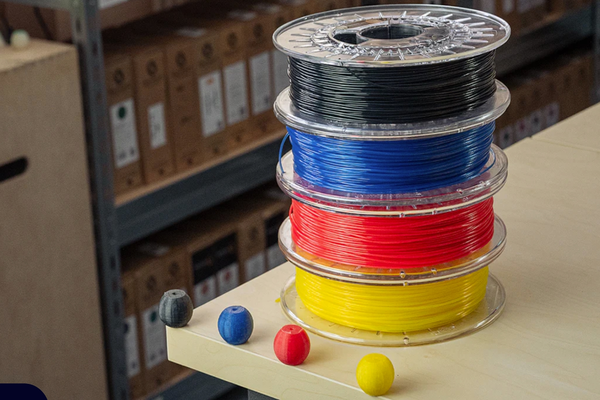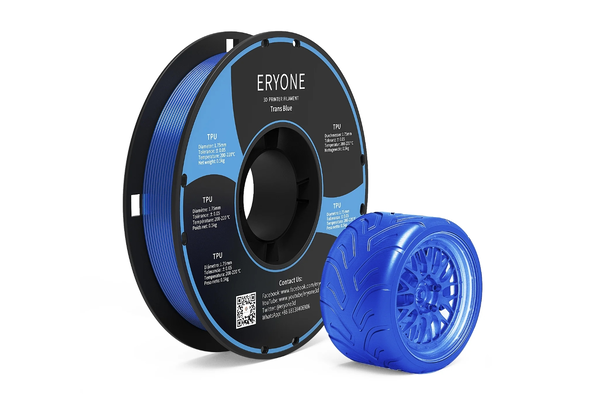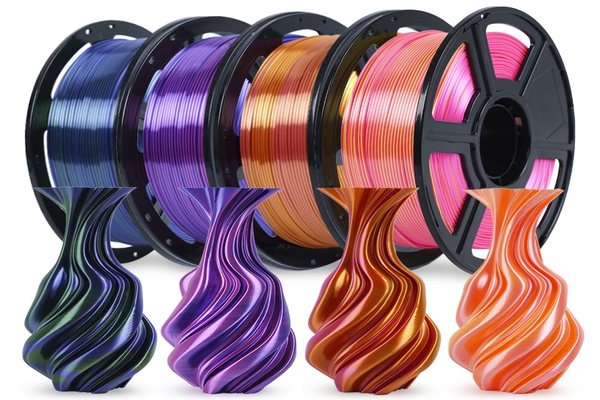What is carbon fiber filament?
Carbon fiber filament is a specialized type of material used in 3D printing that incorporates short strands of carbon fibers into a standard base material, such as PLA, ABS, PETG, or Nylon. Carbon fibers are known for their high stiffness, tensile strength, and resistance to temperature, which significantly enhance the properties of the base material.
The addition of carbon fibers to the filament improves its structural integrity and the final printed object becomes stronger, sturdier, and more dimensionally stable. Moreover, carbon fiber filaments have a lightweight mechanical property.
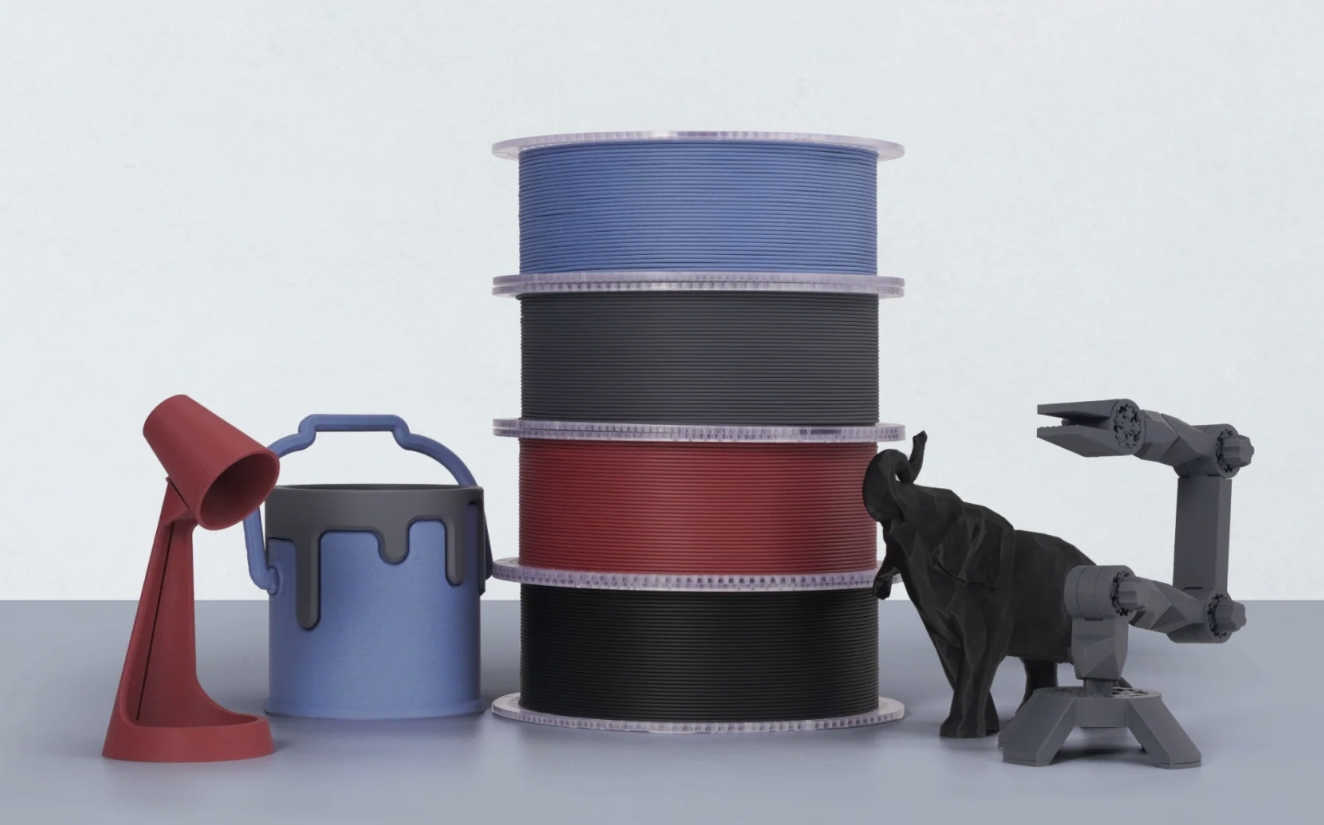
Image Source: Bambu Lab
Types of Carbon Fiber Filaments
PET CF (Polyethylene Terephthalate Carbon Fiber)
PET CF filaments are known for their low moisture absorption and high dimensional stability. They combine the toughness of PET with the strength of carbon fibers and are suitable for load-bearing structures or prints used in high-temperature and humid environments.
PA 6 CF (Polyamide 6 Carbon Fiber)
PA 6 CF filament is reinforced with carbon fibers to improve stiffness, strength, and heat resistance significantly. It is ideal for applications that require high durability and impact resistance, such as car parts and industrial components.
PA 12 CF (Polyamide 12 Carbon Fiber)
PA 12 CF is a high-performance filament that combines Polyamide 12 with carbon fibers, resulting in a material with excellent stiffness, strength, and heat resistance. It is known for low moisture sensitivity and warp-free printing capabilities, making it suitable for manufacturing tools and functional parts.
PLA CF (Polylactic Acid Carbon Fiber)
PLA CF offers the ease of printing associated with PLA but with added strength and rigidity thanks to the carbon fiber reinforcement. It is a great choice for those looking for strong and lightweight PLA parts.
PETG CF (Polyethylene Terephthalate Glycol Carbon Fiber)
PETG CF is a co-polyester reinforced with carbon fibers, offering ease of printing, excellent strength and stiffness, and superior dimensional stability. It is a versatile material made for a wide range of applications, including those requiring chemical resistance and low shrinkage.
ABS CF (Acrylonitrile Butadiene Styrene Carbon Fiber)
ABS CF is a blend of ABS plastic with carbon fibers, which enhances the material’s strength, stiffness, and temperature resistance. It’s known for its ease of printing, excellent dimensional stability, and smooth surface finish.
PC CF (Polycarbonate Carbon Fiber)
PC CF combines polycarbonate’s high heat resistance and mechanical properties with the strength of carbon fibers. It’s also known for its high stiffness, excellent dimensional stability, and superior surface quality.
Why use carbon fiber filament?
General Properties of Carbon Fiber Filament
● High Tensile Strength: Carbon fiber filaments exhibit superior tensile strength, making them capable of withstanding significant stress without stretching or breaking.
● Lightweight: Despite their strength, these filaments are remarkably lightweight, which is crucial for applications where weight is a limiting factor.
● High Stiffness: The rigidity of carbon fiber filaments means that printed parts maintain their shape under force, leading to more durable and stable creations.
● Thermal Stability: With a high tolerance for temperature, carbon fiber filaments can withstand heat without deforming, making them suitable for parts that experience high thermal exposure.
● Chemical Resistance: Carbon fiber filaments resist chemicals well, which is beneficial for parts that may be exposed to corrosive substances.
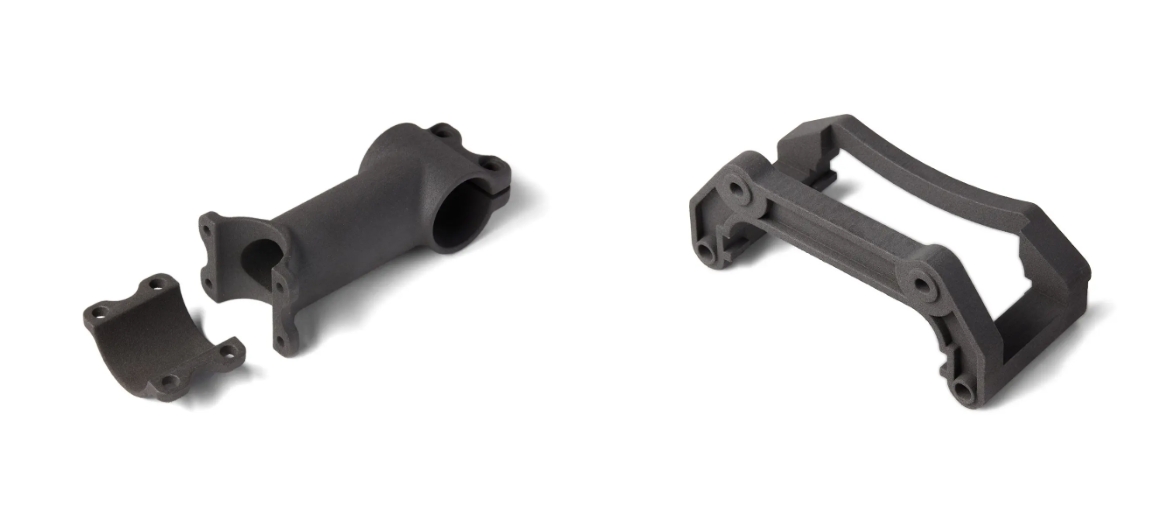
Image Source: Formlabs
Carbon Fiber 3D Printed Parts Applications
Aerospace and Aviation
Carbon fiber 3D printed parts are used to produce components that are lighter and stronger than traditional materials, leading to increased fuel efficiency and performance.
Automotive Industry
The automotive industry benefits from carbon fiber’s durability and lightweight nature, using it for parts like dashboards, bumpers, and gear knobs. The material not only improves the vehicle’s performance but also its fuel efficiency.
Medical Devices
Carbon fiber’s biocompatibility makes it suitable for prosthetics and orthopedic devices. Its lightweight and high-strength properties provide comfort and functionality for patients.
Sports Equipment
From bicycles to tennis rackets, carbon fiber is used to enhance the performance of sports equipment, offering high strength without adding unnecessary weight.
Robotics
In robotics, carbon fiber parts contribute to the creation of more efficient and precise robots. End-of-arm tooling, for example, benefits from the material’s rigidity and lightness.
Consumer Products
Everyday items such as laptop cases, phone covers, and even furniture are now being made with carbon fiber filaments, providing a sleek, modern look along with durability.
Industrial Tooling
Carbon fiber is also used in the manufacturing of jigs, fixtures, and alignment tools, which require high precision and strength to maintain their shape under stress.
Energy Sector
In the energy sector, carbon fiber is being explored for use in wind turbine blades and energy storage systems, where its strength and fatigue resistance can lead to longer-lasting, more efficient designs.
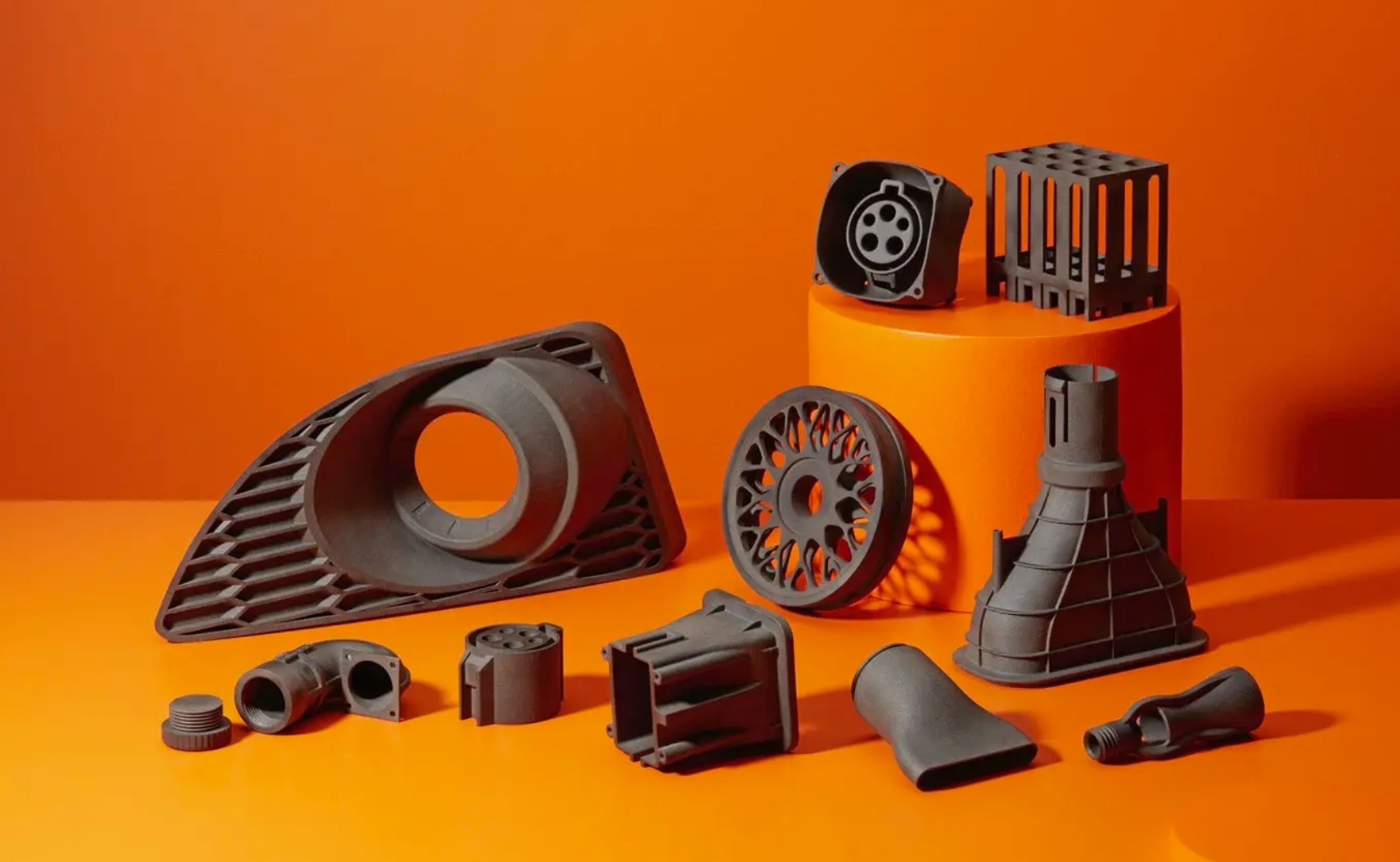
Image Source: Formlabs
Recommended Carbon Fiber Filaments
1. MH PRO Series Carbon Fiber Nylon
The MH PRO Series Carbon Fiber Nylon filament is the ideal choice for projects that require the highest level of performance. The filament features high impact resistance, chemical resistance, and impressive durability. Its ±0.02mm diameter tolerance ensures consistent printing.
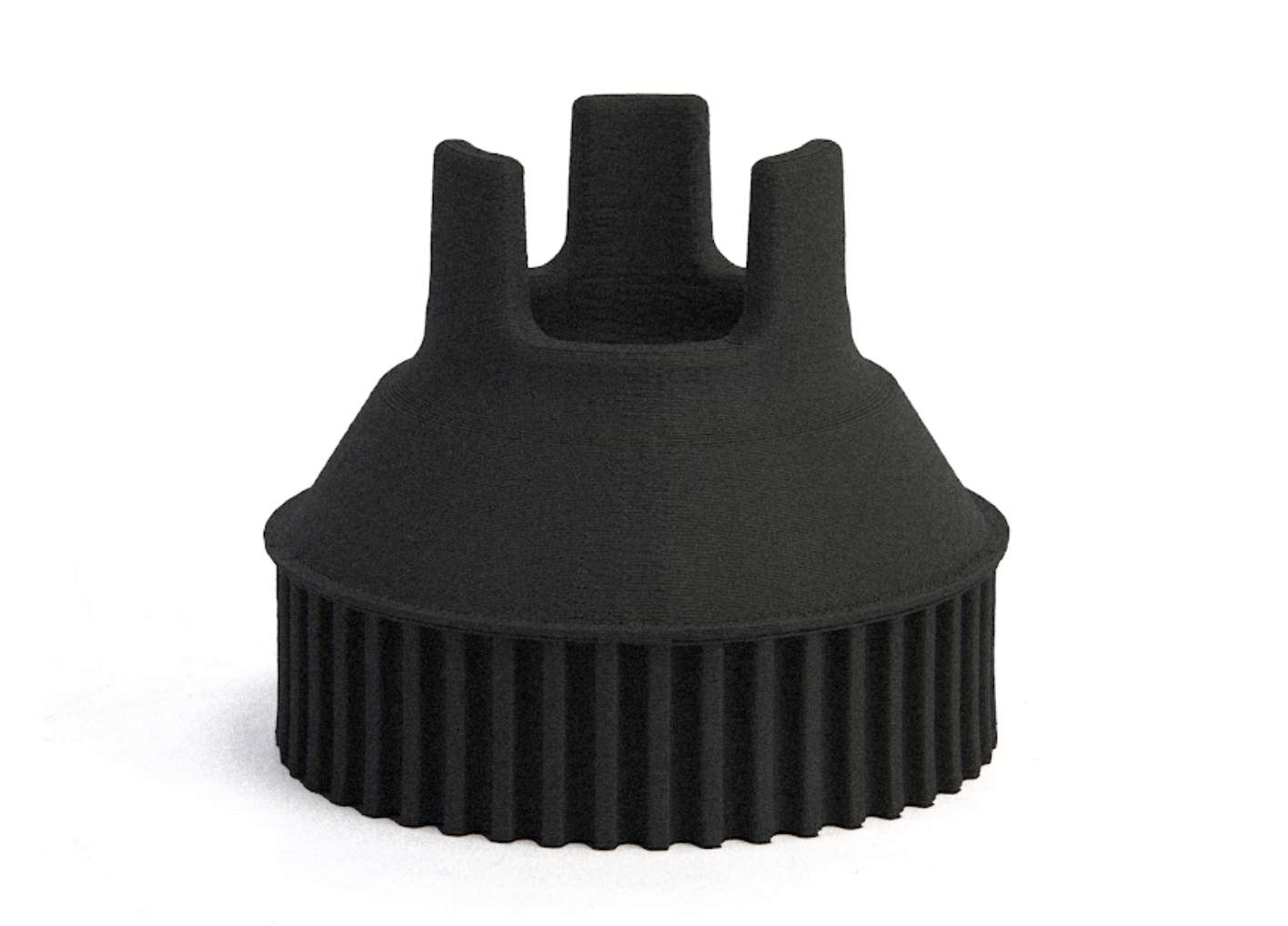
Image Source: MatterHackers
2. Bambu Lab PLA Carbon Fiber Filament
Bambu Lab's carbon fiber reinforced PLA offers a unique combination of ease of use and enhanced mechanical properties. With its carbon fiber texture, the PLA CF filament provides prints with a distinctive matte finish and minimized layer lines.
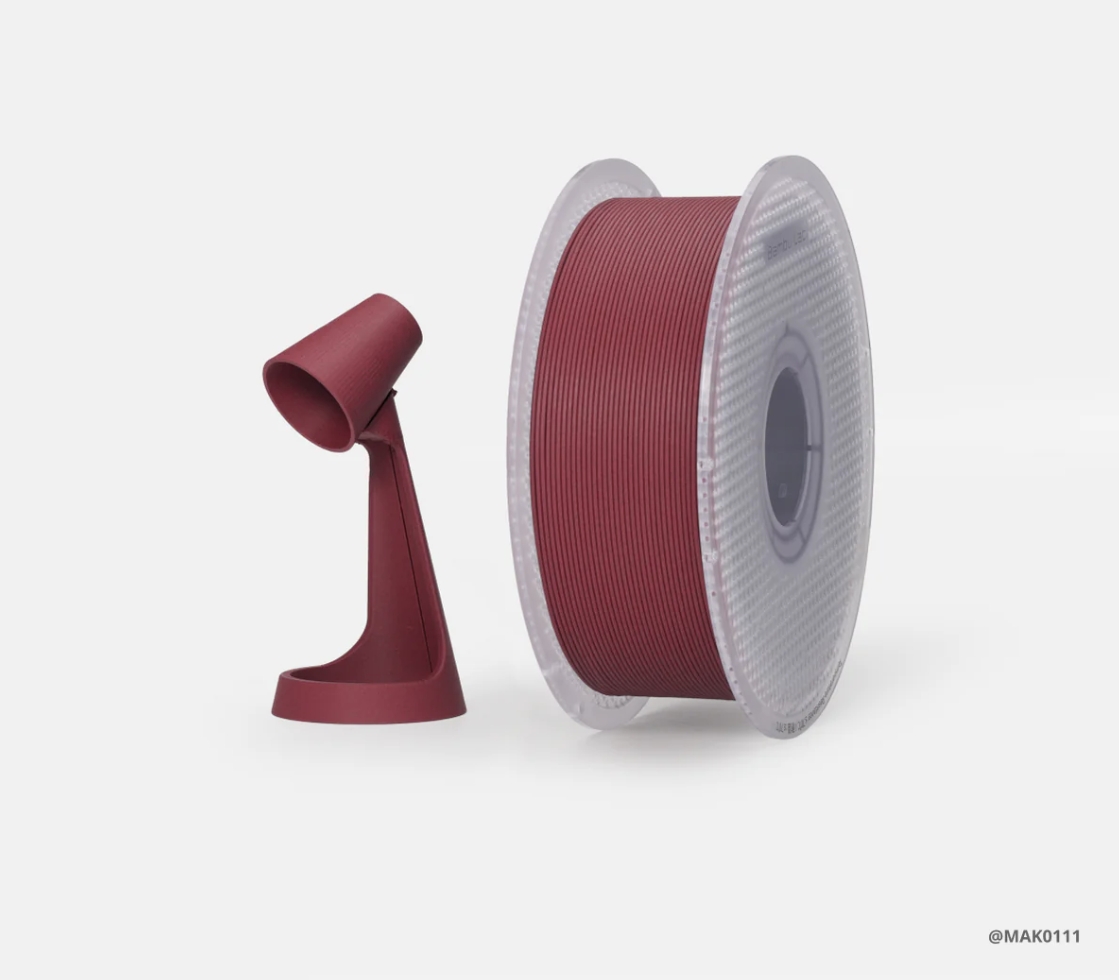
Image Source: Bambu Lab
3. 3DXTECH CarbonX™ ABS+CF
The CarbonX™ ABS+CF filament is made using high-flow ABS and premium high-modulus carbon fiber, resulting in a material that offers ease of printing alongside its robust mechanical properties. With a carbon fiber content of 10%, it provides an excellent surface finish quality.
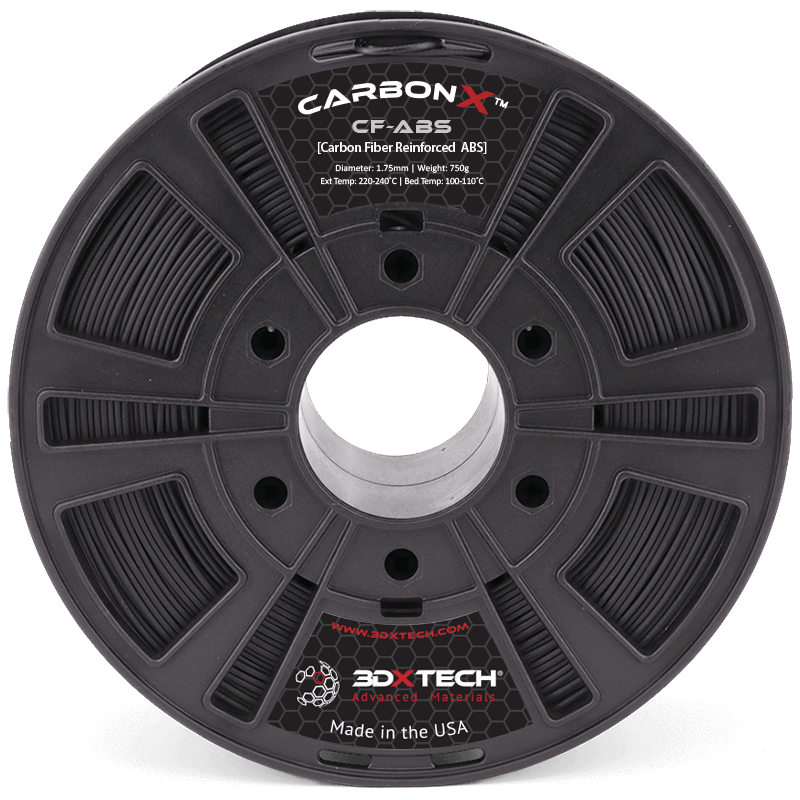
Image Source: 3DXTECH
4. Filamentive Carbon Fibre PETG Filament
With a composition that includes 20% recycled carbon fibers, this filament offers exceptional stiffness and impact resistance while maintaining a heat resistance of up to 80°C. It is perfect for creating parts that are strong and durable and have an attractive matte black surface.
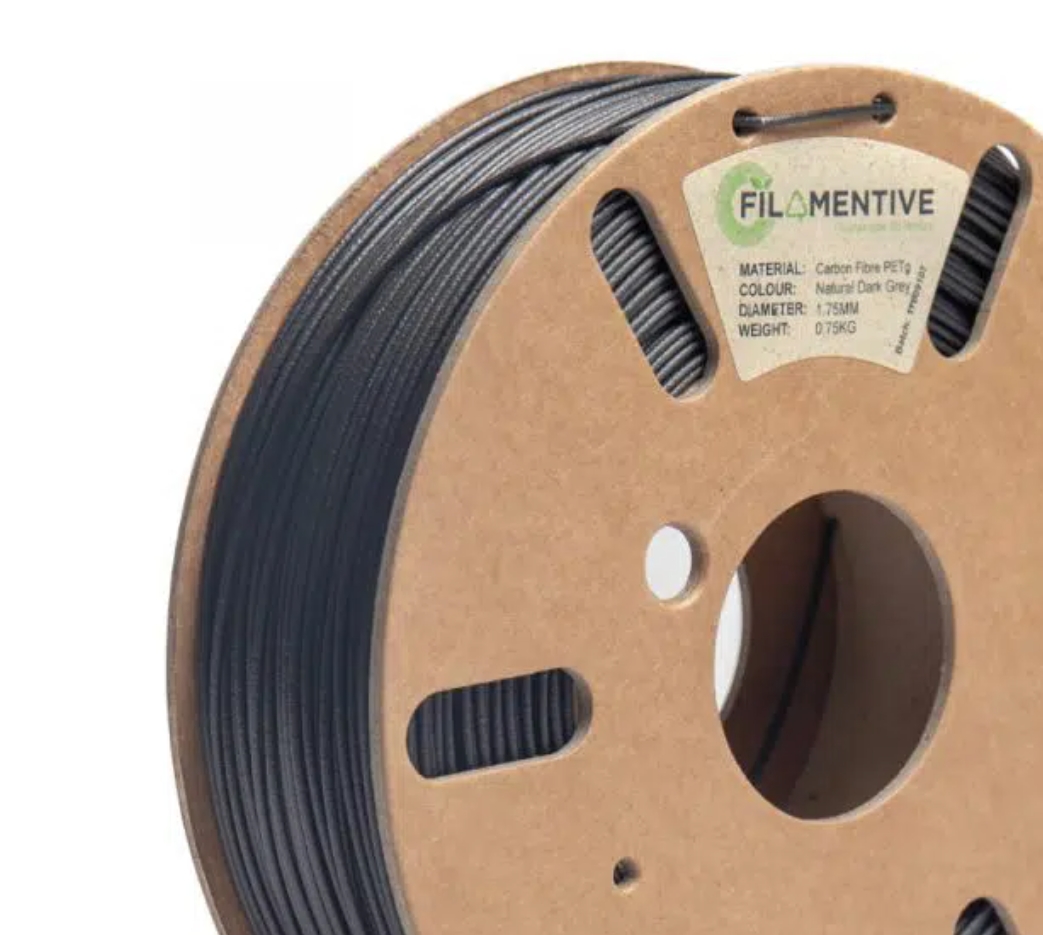
Image Source: Filamentive
5. Polymaker PolyMide™ PA12-CF
The PolyMide™ PA12 CF is known for its low moisture sensitivity, which greatly enhances its handling, storing, and printing capabilities. It is designed to deliver an excellent surface finish and is ideal for creating manufacturing tools and functional parts.
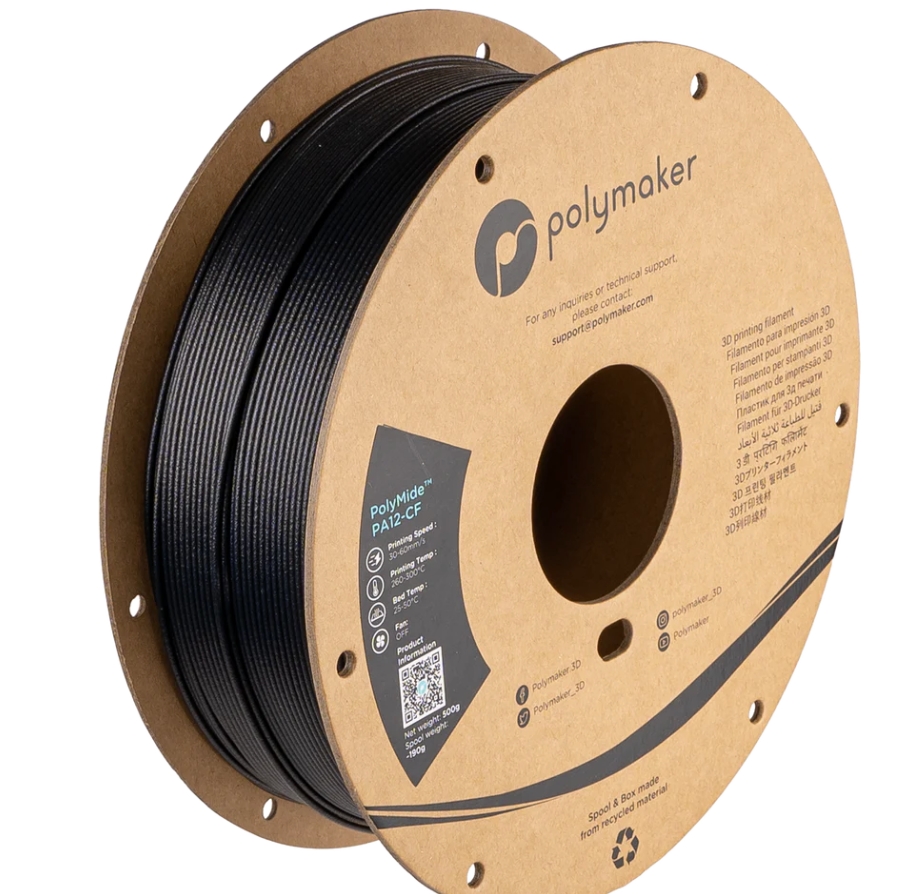
Image Source: Polymaker
6. Raise3D Industrial PA12 CF+ Filament
The addition of 15 wt.% short carbon fibers enhances mechanical and thermal properties, as well as the surface quality of printed parts. It exhibits a higher strength-to-weight ratio, better interlayer bonding quality, and improved dimensional stability compared to its counterparts. Ideal for use in manufacturing, automotive, and aerospace industries.
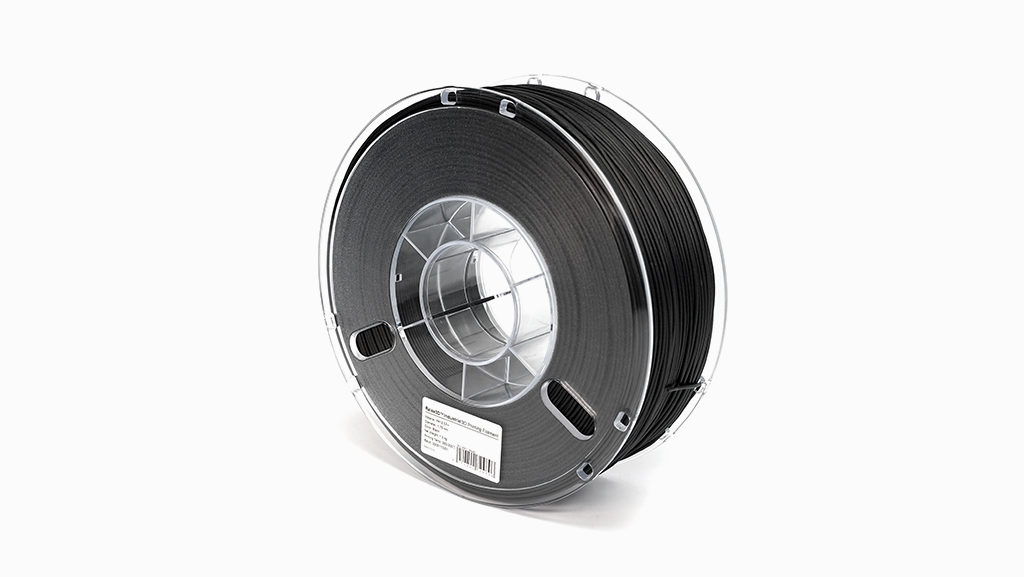
Image Source: Raise3D
7. Raise3D Industrial PET CF Filament
The PET CF filament offers enhanced rigidity, strength, and heat resistance, making it an ideal choice for end-use applications that demand durability. Its low moisture absorption and high creep resistance ensure that your prints will maintain their integrity even in challenging environments.
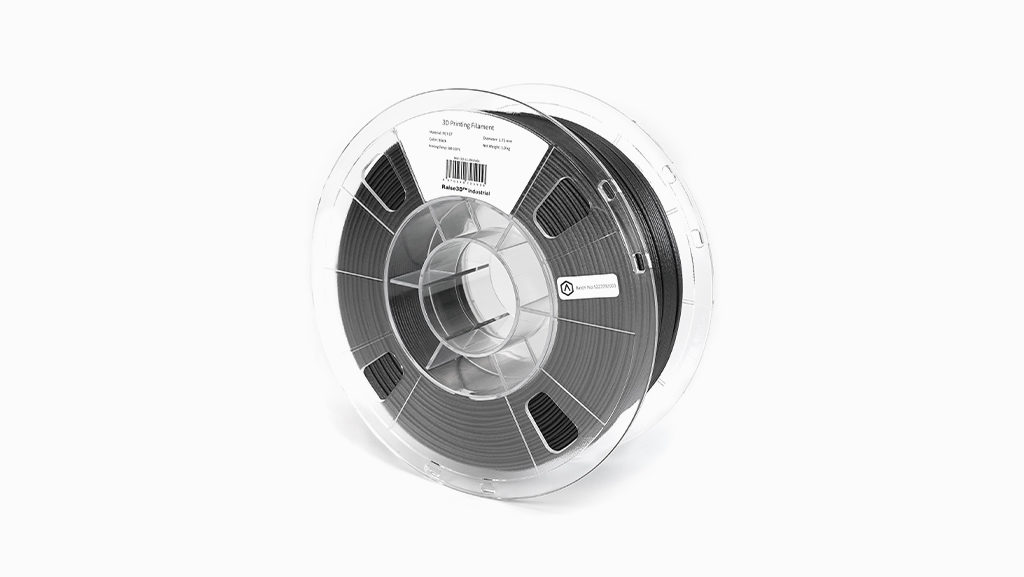
Image Source: Raise3D
8. Polymaker PolyMide™ PA6-CF
The PolyMide™ PA6-CF Black is a carbon fiber reinforced nylon 6 (PA6) filament, which means it offers significantly improved stiffness and strength compared to conventional filaments. With a heat deflection temperature of 215°C, it is capable of withstanding demanding applications while maintaining outstanding layer adhesion.
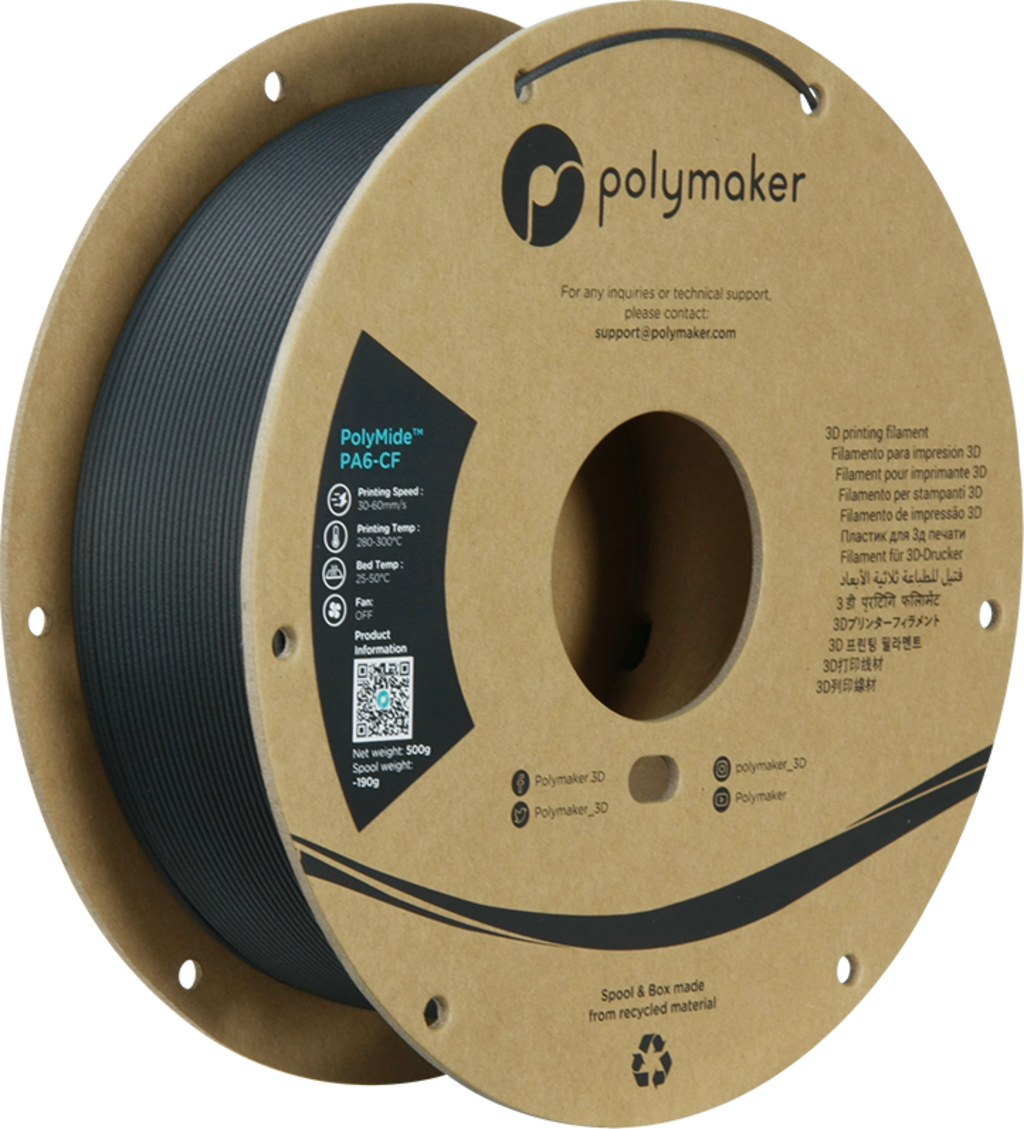
Image Source: Polymaker












